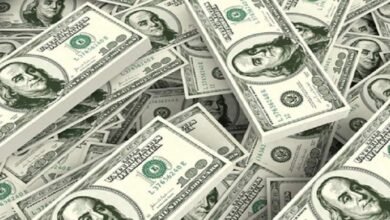Indian Rupee Hits Record Low Against Dollar

What’s going on here?
The Indian rupee hit rock bottom on Tuesday, opening unchanged against the US dollar at 83.9725 – its lowest value on record.
What does this mean?
With the rupee nearing unprecedented lows, the Reserve Bank of India (RBI) is working overtime to stabilize the currency by selling dollars, hoping to prevent it from crossing the dreaded 84 mark. The rupee’s troubles stem from relentless dollar demand from importers, compounded by rising oil prices amid fears of Middle Eastern conflict. A currency trader speculates that increased dollar demand might be tied to non-deliverable forwards (NDFs), oil, or even gold transactions. On Monday, oil prices spiked over 3%, with Brent crude climbing more than 6% since the previous week. Typically not a major factor, escalating oil prices are now adding incremental negative pressure on the rupee, according to a treasury official.
Why should I care?
For markets: Navigating choppy waters.
The shaky performance of Asian currencies and a strong US dollar index at 103.1 are creating a tough environment. Investors are closely monitoring upcoming US inflation data, both wholesale and consumer, expected soon. ING Bank suggests these figures could prompt the Federal Reserve to consider a rate cut in September. Meanwhile, key financial indicators show a one-month non-deliverable rupee forward at 84.04, an onshore one-month forward premium at 7.50 paise, Brent crude futures at $81.7 per barrel, and the ten-year US note yield at 3.91%.
The bigger picture: Global ripples, local impact.
Foreign investors are reshuffling their portfolios amid the turmoil, selling a net $138.4 million worth of Indian shares but buying a net $104.2 million worth of Indian bonds as of August 11, according to NSDL data. This shift highlights the broader uncertainty in global markets and the Indian economic landscape. The RBI’s interventions are crucial, but the interplay of global oil prices, dollar demand, and impending US inflation data will determine the rupee’s trajectory.
Source link




